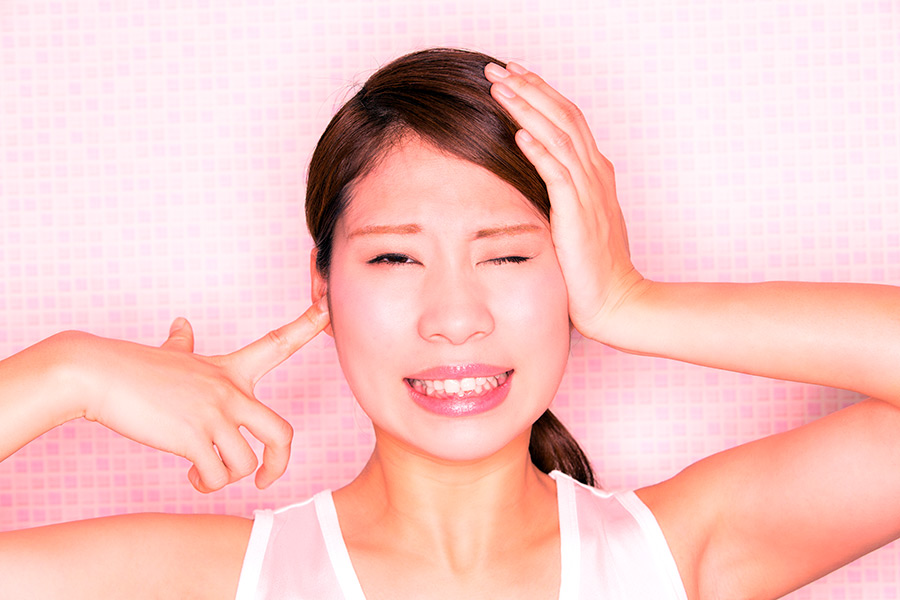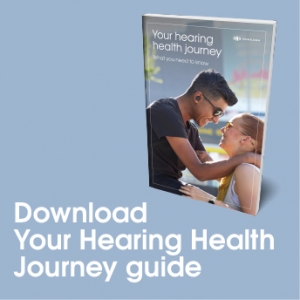
People with noise sensitivity anxiety experience an intense emotional and sometimes physical reaction when exposed to certain sounds. Often, these sounds do not seem to bother anyone else. The medical term for this condition is misophonia.
What is Misophonia or Noise Sensitivity Anxiety?
WebMD describes misophonia as a neurological disorder where specific sounds trigger an emotional response that can include anger, fear, or annoyance. Misophonia triggers the fight-or-flight response in some people. This response causes them to panic or feel a need to run away from the distressing sound.
People living with the condition, also known as selective sound sensitivity syndrome, describe feeling like they are going crazy when they hear the triggering sounds.
What Types of Sounds Trigger Noise Sensitivity Anxiety?
Oral sounds such as chewing, breathing, or eating are a common trigger for misophonia. Other sounds like the tap of a pencil, keyboard, or foot may cause a reaction in people with this issue. The presence of visual stimulation at the same time as the problem sounds may worsen the symptoms. Also, repetitive motions tend to be very problematic.
How Does How Does Noise Sensitivity Anxiety Develop?
Doctors are not entirely sure what causes misophonia. The most accepted theory is that the condition occurs due to abnormal functioning in the brain’s limbic system. This is the area that helps to regulate emotion. The autonomic nervous system, which controls involuntary functions such as breathing and the heart beating, plays a role as well. Yet another area of brain involvement is the auditory cortex. This part of the brain controls hearing and helps people interpret sound.
Most doctors consider misophonia to be part neurological and part behavioral. Since it usually appears in childhood between the ages of 9 and 13, those with misophonia develop negative associations to where they first heard the troubling sounds.
For example, the sound of other people chewing while sitting at the dinner table may initially cause anxiety or sensory overload. A person with misophonia subconsciously makes the association between the dinner table and anxiety whether they hear chewing or not.

What Are the Most Common Misophonia Symptoms?
No diagnosis code currently exists for misophonia in the Diagnostic and Statistical Manual of Mental Disorders. Some neurologist and psychologists recommend placing misophonia under the diagnosis code of obsessive-compulsive disorder. Because it remains difficult to diagnose, providers typically rely on visual observation rather than a specific set of criteria. Here are some behaviors that healthcare providers look for when considering whether a patient has misophonia:
- Hypersensitivity to certain sounds or the anticipation of certain sounds resulting in a hyperarousal reaction of fear, anger, irritation, or verbal outbursts.
- Avoiding situations that produce certain sounds because they create noise sensitivity anxiety.
- The physical or psychological response appears to cause significant distress such as ongoing family problems, disruption in education, and/or behavioral meltdowns.
Without a word of a lie, I have this. My wife suggested it two years ago and I spoke with a doctor about it last year. It sucks. https://t.co/LFKzbEHaIi
— Stephen Amell (@StephenAmell) April 27, 2020
Sometimes the only criteria for diagnosing misophonia is that the patient’s symptoms do not fit well with any other physical or psychiatric disorder. Misdiagnosis and stigma can be challenges for people with this condition.
Others may assume they react to sounds the way they do just to elicit sympathy or attention and become annoyed and intolerant of them. Facing this reaction from people often enough increases the risk of isolation and depression for people with misophonia.
Treatments for Misophonia and Other Types of Noise Sensitivity
While misophonia is a difficult condition to have, the good news is that sufferers can take several steps to manage their symptoms and make their triggering sounds more tolerable. Professional treatment usually involves a multi-disciplinary approach with a neurologist, audiologist, and the patient’s regular doctor. Counseling to deal with the frustration, embarrassment, or anger about having misophonia can also be helpful.
Living a healthy lifestyle cannot cure misophonia but it can help to make it less disruptive. People with this condition should make sure they get regular exercise, at least seven hours of sleep each night, and reduce the stress in their lives as much as possible.
Among new devices for potentially treating misophonia, earbuds offering a bevy of noise control and cancellation capabilities look encouraging.
Other Useful Resources
Many cognitive therapists tell their patients to not hide from the world or the sounds that distress them. Instead, strive to mitigate misophonia or noise sensitivity anxiety with the aid of the aforementioned solutions and techniques. Find additional resources for misophonia in the bullet points below:
- Check out the International Misophonia Research Network (IMNR)
- Individuals living in the United Kingdom should visit Allergic to Sound
- Find daily stories from misophonia patients and doctors at Misophonia International
- For people who have co-occurring Obsessive Compulsive Disorder (OCD) and Misophonia, visit International OCD Foundation
- For people who have co-occurring Tinnitus or Hyperacusis and Misophonia, Dr. Pawel Jastreboff’s Tinnitus and Hyperacusis Center
- To follow Dr. Jennifer Jo Brout’s blog on Psychology Today, visit Noises
- For parents and loved ones who have children with Misophonia, visit Dr. Brout’s Misophonia Kids
- To see groups that are involved in misophonia research and some currently funded projects, visit Misophonia Research Fund (MRF)
- Hear conversations with people who have misophonia & occasional guests who are researchers and clinicians, visit The Misophonia Podcast


